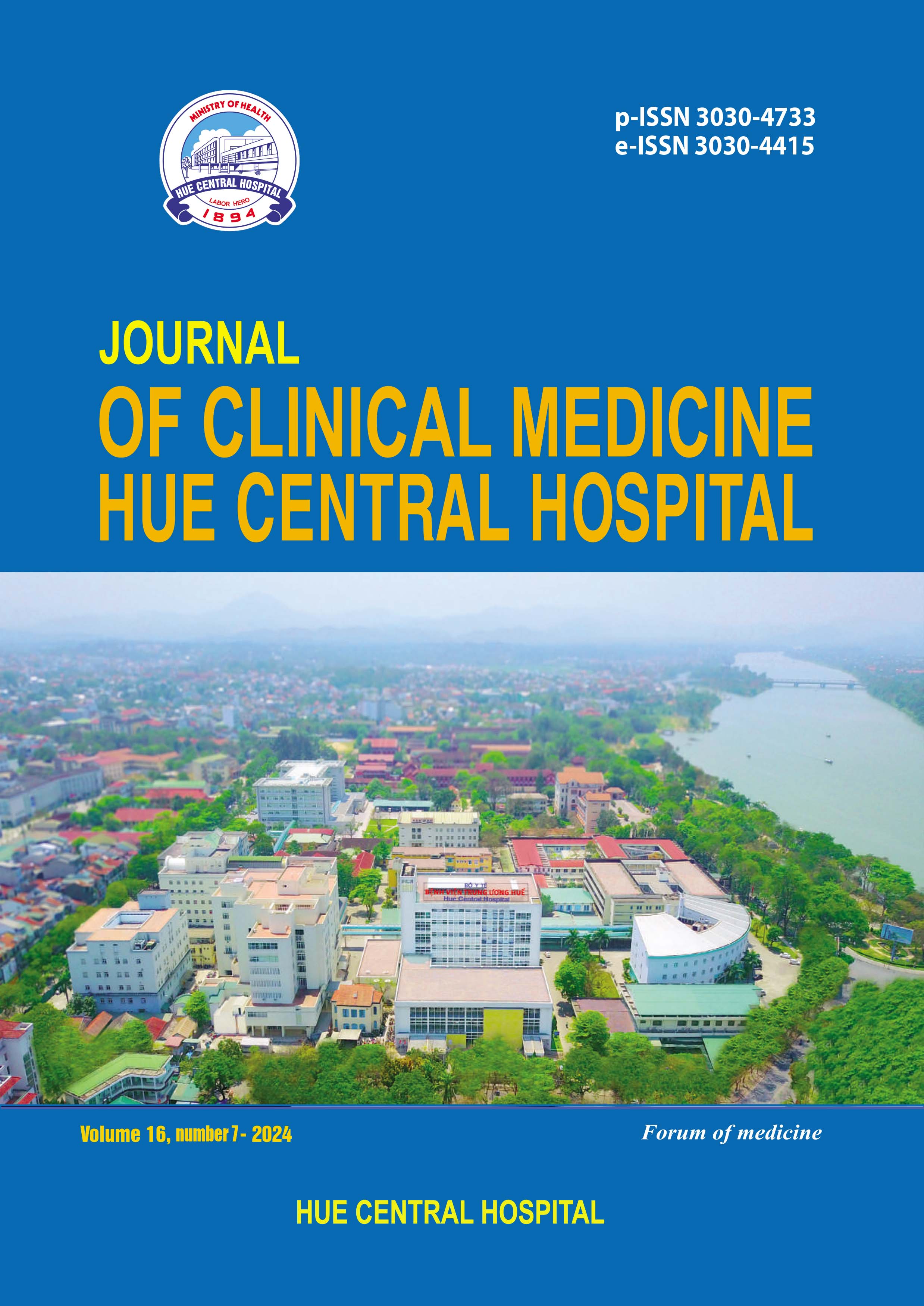Abstract
Background: Chronic Spontaneous Urticaria (CSU) is a common condition. Autoimmunity is considered the underlying cause for the majority of CSU cases. The Autologous Serum Skin Test (ASST) demonstrates an autoreactive phenomenon and is one of the diagnostic criteria for autoimmune chronic urticaria. This study aimed to determine the prevalence of ASST positivity among CSU patients and to describe the clinical and laboratory characteristics of these patients.
Methods: A cross-sectional study was conducted on 388 patients aged 16 and above, diagnosed with CSU at the National Hospital of Dermatology and Venereology from June 2023 to March 2024. Data on demographics, medical history, treatment history, clinical symptoms, and laboratory findings were collected.
Results: The proportion of CSU patients with a positive ASST was 57.2%. Female patients were 1.74 times more likely to have a positive ASST than male patients (OR = 1.74; 95%CI = 1.05 - 2.89, p = 0.03). Patients with isolated CSU were 6.06 times more likely to have a positive ASST compared to those with concurrent chronic inducible urticaria (OR = 6.06; 95%CI = 2.88 - 12.76; p < 0.01). Patients with elevated SGOT levels were 0.30 times more likely to have a positive ASST compared to those with normal SGOT levels (OR = 0.30; 95%CI = 0.12 - 0.75; p = 0.01).
Conclusion: ASST is an important supplementary tool in assessing the autoimmune aspect of chronic urticaria and should be more widely utilized to guide effective treatment strategies.
References
Kulthanan K, Jiamton S, Gorvanich T, Pinkaew S. Autologous serum skin test in chronic idiopathic urticaria: prevalence, correlation and clinical implications. Asian Pac J Allergy Immunol. 2006 Dec;24(4):201-6.
Kaplan A, Lebwohl M, Giménez-Arnau AM, Hide M, Armstrong AW, Maurer M. Chronic spontaneous urticaria: Focus on pathophysiology to unlock treatment advances. Allergy. 2023 Feb;78(2):389-401.
George M, Balachandran C, Prabhu S. Chronic idiopathic urticaria: comparison of clinical features with positive autologous serum skin test. Indian J Dermatol Venereol Leprol. 2008;74(2):105-8.
Konstantinou GN, Asero R, Maurer M, Sabroe RA, Schmid-Grendelmeier P, Grattan CEH. EAACI/GA2LEN task force consensus report: the autologous serum skin test in urticaria. Allergy. 2009;64(9):1256-68.
Konstantinou GN, Asero R, Ferrer M, Knol EF, Maurer M, Raap U, et al. EAACI taskforce position paper: evidence for autoimmune urticaria and proposal for defining diagnostic criteria. Allergy. 2013 Jan;68(1):27-36.
Vikramkumar AG, Kuruvila S, Ganguly S. Autologous serum skin test as an indicator of chronic autoimmune urticaria in a tertiary care hospital in South India. Indian Dermatol Online J. 2014 Dec;5(Suppl 2):S87-91.
Nguyễn Như Nguyệt. Nghiên cứu giá trị của test da với huyết thanh tự thân trong bệnh mày đay mạn tính [Luận văn bác sĩ nội trú]. [Việt Nam]: Trường Đại Học Y Hà Nội; 2015.
Schoepke N, Asero R, Ellrich A, Ferrer M, Gimenez-Arnau A, E H Grattan C, et al. Biomarkers and clinical characteristics of autoimmune chronic spontaneous urticaria: Results of the PURIST Study. Allergy. 2019 Dec;74(12):2427-36.
Gonçalo M, Gimenéz-Arnau A, Al-Ahmad M, Ben-Shoshan M, Bernstein JA, Ensina LF, et al. The global burden of chronic urticaria for the patient and society. Br J Dermatol. 2021 Feb;184(2):226-36.
Adil MCLH, Nopriyati, Oktariana D, Kurniawati Y, Prasasty GD. Disease Severity Based on Autologous Serum Skin Test Result in Chronic Spontaneous Urticaria Patients at Dermatology and Venereology Outpatient Clinic of Dr. Mohammad Hoesin General Hospital Palembang. J RSMH Plb. 2021 Mar 30;2(1):86-91.
Zuberbier T, Abdul Latiff AH, Abuzakouk M, Aquilina S, Asero R, Baker D, et al. The international EAACI/GA2LEN/EuroGuiDerm/APAAACI guideline for the definition, classification, diagnosis, and management of urticaria. Allergy. 2022;77(3):734-66.
Kolkhir P, Giménez-Arnau AM, Kulthanan K, Peter J, Metz M, Maurer M. Urticaria. Nat Rev Dis Primer. 2022 Sep 15;8(1):61.
Asero R, Pinter E, Tedeschi A. 35 years of autologous serum skin test in chronic spontaneous urticaria: what we know and what we do not know. Eur Ann Allergy Clin Immunol. 2023 Jan;55(1):4-8.
Xiang YK, Guloglu S, Elieh-Ali-Komi D, Kocatürk E. Chronic spontaneous urticaria: new evidences on the role of autoimmunity. Curr Opin Allergy Clin Immunol. 2023 Oct 1;23(5):438-45.
Hoàng Danh Tân, Lê Đình Tùng và Bùi Văn Dân. Mối liên quan của một số chỉ số viêm với các đặc điểm lâm sàng và cận lâm sàng ở người bệnh mày đay mạn tính. Tạp chí Sinh lý học Việt Nam. 27(4).
Vohra S, Sharma NL, Mahajan VK, Shanker V. Clinicoepidemiologic features of chronic urticaria in patients having positive versus negative autologous serum skin test: A study of 100 Indian patients. Indian J Dermatol Venereol Leprol. 2011 Mar 1;77:156.
| Published | 20-10-2024 | |
| Fulltext |
|
|
| Language |
|
|
| Issue | Vol. 16 No. 7 (2024) | |
| Section | Original article | |
| DOI | 10.38103/jcmhch.16.7.18. | |
| Keywords | Mày đay, Mày đay mạn tính tự phát, Mày đay mạn tính tự miễn, ASST Urticaria, Chronic spontaneous urticaria, Autoimmune chronic urticaria, ASST |

This work is licensed under a Creative Commons Attribution-NonCommercial-NoDerivatives 4.0 International License.
Copyright (c) 2025 Journal of Clinical Medicine Hue Central Hospital

